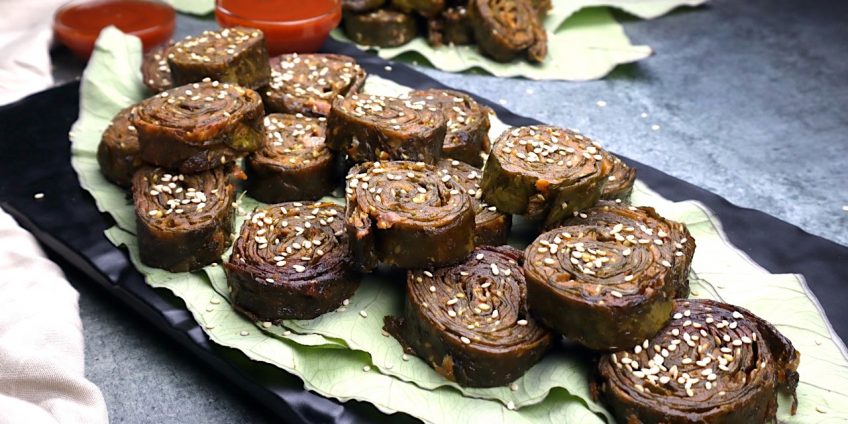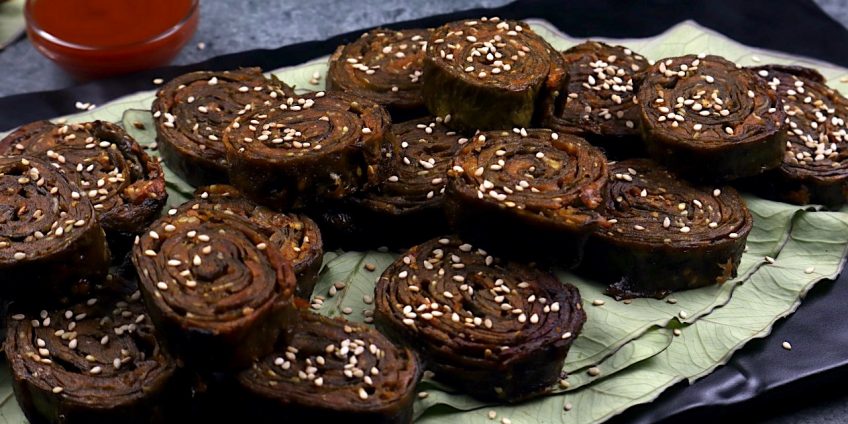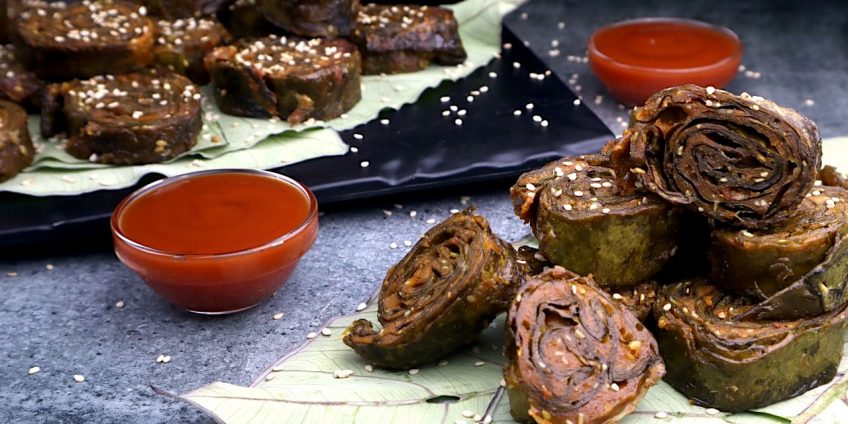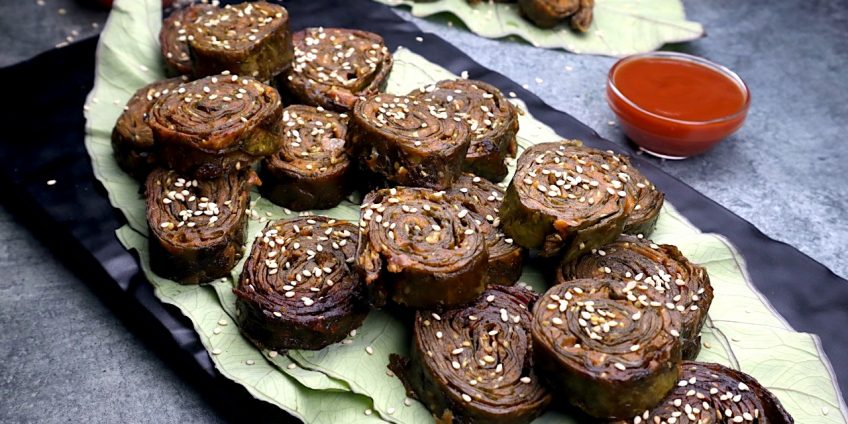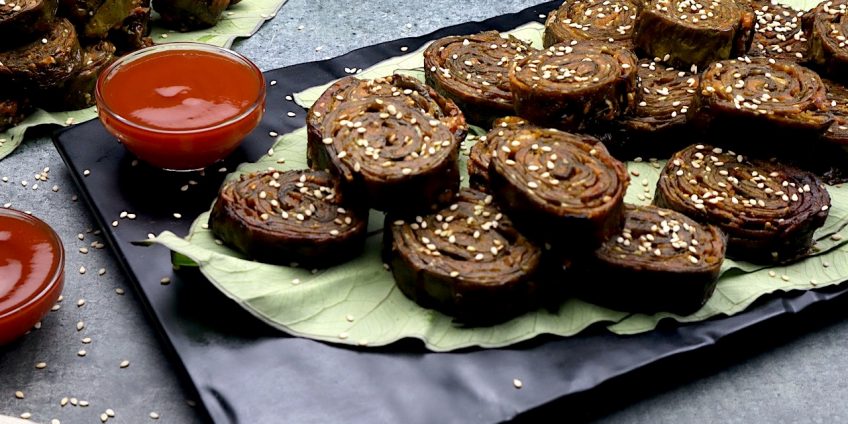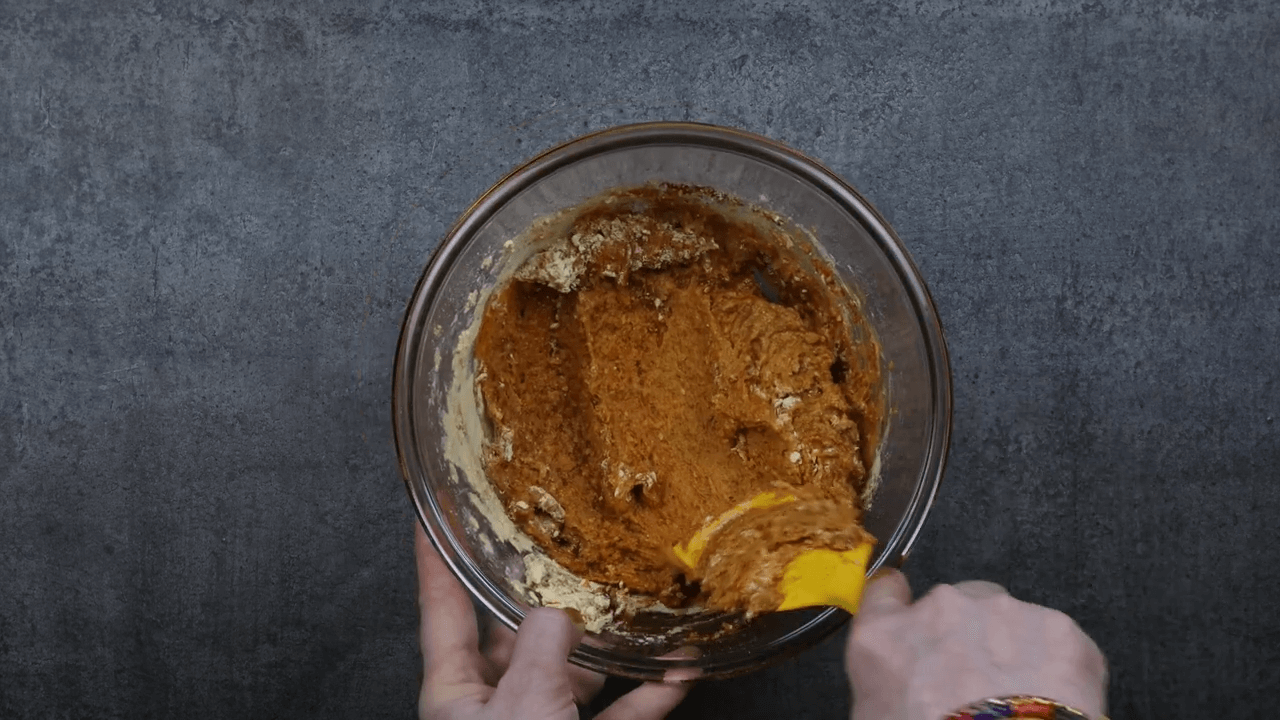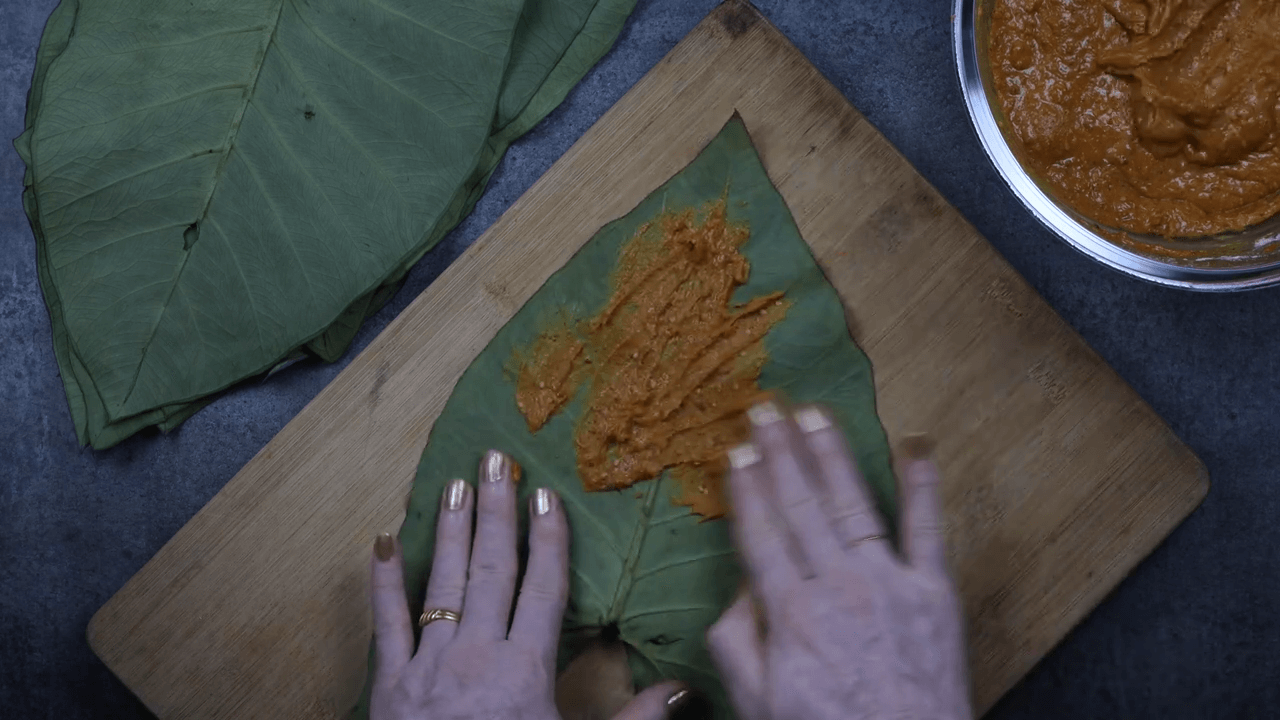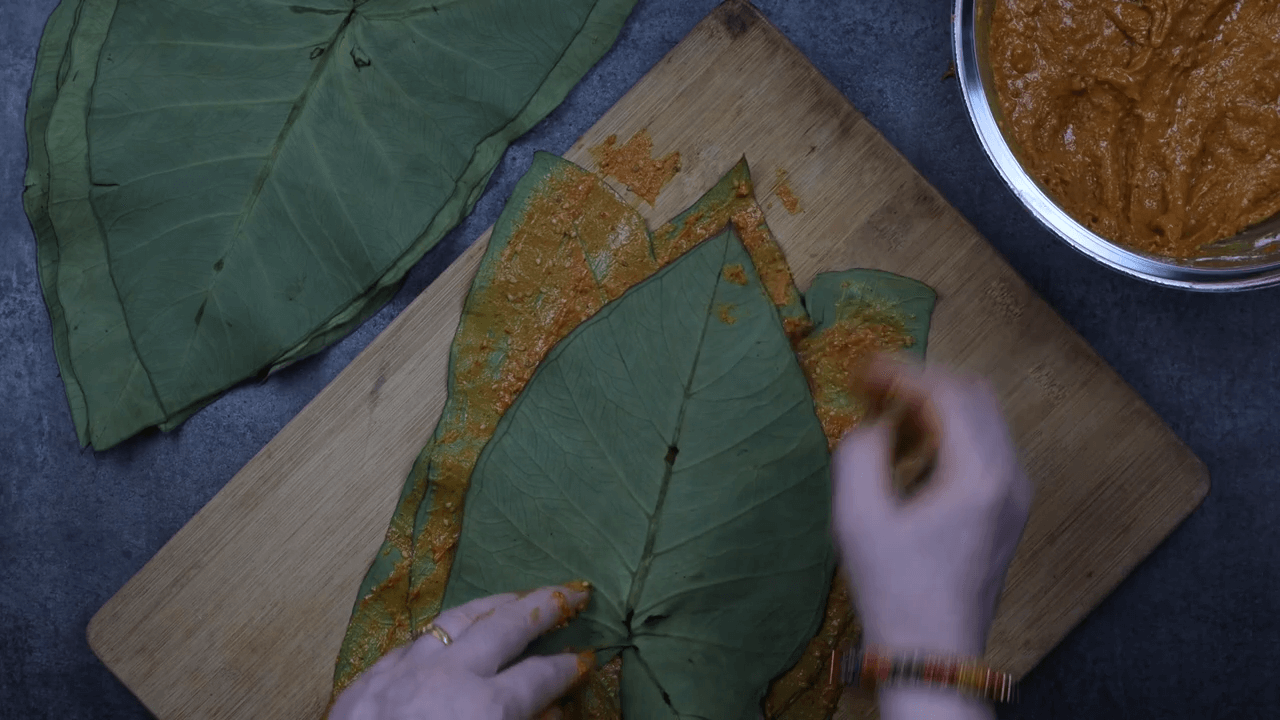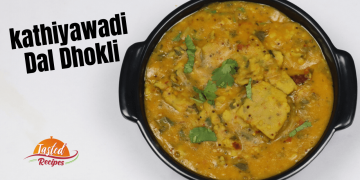Patra is a fried vegetarian snack recipe from Gujarati cuisine. Colocasia leaves, or arbi, are the core of this dish. It is soft and sweet, tangy, and a little spicy.
People call this dish different names across different parts of India. For example, on the West coast & Himachal Pradesh of India, it is commonly known as Patrodu or Patrodo. In Gujarat, it is Patra, Patrodo in Maharashtra & Goa, and Patrode in Coastal Karnataka.
What is Arbi Ke Patte?
Generally, these are leaves from the Taro plant. They are also called colocasia leaves, elephant ear leaves, or simply taro. In Hindi though, these are called Arvi, Arabi, Arbi, Alvi, Chaama, Ghuiya, Patra, and Mukh.
Taro is used in more than one way in cooking. The roots, stems, as well as leaves, can be used in cooking. Snack and vegetable main course dish is both prepared from these arbi leaves.
Colocasia leaves are nutritious and healthy. Using them in this way will make it tasty as well. Patra is a trendy snack amongst the Gujarati community. You will often find it served with meals as a side dish, in lunch boxes, or just as a snack at parties.
Some substitute spinach leaves to make this dish if colocasia leaves are not available. Or you can use small arbi leaves to make mini Patras.
How To Make Patra At Home?
You can make them easily at home. However, it may take some effort and practice to perfect this dish. But after that, it will be a smooth sail.
First, wash and dry the leaves. Then remove the stem from the leaves, or else it will create problems in the cooking process.
Now make the paste for the filling. Add gram flour, spices, tamarind pulp, jaggery, and seeds. Mix them. Add water gradually to the mixture and mix to make a paste.
After that, place the leaf on a flat surface and apply the paste evenly to it. Then place another leaf over it but upside down. Apply the paste over the surface likewise. Repeat this process with 3-4 leaves.
Once you have done it, roll the leaves and fold the ends to pack them into a roll. Repeat the same process with the remaining leaves. Then we will steam them for 10 minutes.
After the steaming, cut them into equal pieces. Heat some oil in a pan. Shallow fry the pieces until it turns golden brown. Or until the surface is crispy. Do not burn them.
Sprinkle some sesame seeds on them, and they are ready to serve. Or if you want to garnish with desiccated coconut.
You will also find these in packets in dry and hard form to eat. Enjoy these Patras with a cup of tea or with sweet and sour chutney.
Tips:
- Instead of jaggery, you can use sugar. But jaggery is the authentic option. Adding sugar for sweetness can make the paste watery. Hence it is not recommended. Jaggery is better. The amount is adjustable if you do not like too much sweet. Further, tamarind water is a good substitute for tamarind paste. If so, do not use extra water.
- Water is to make the paste for the filling. Please do not use too much, or else it will be runny.
- Any flour other than gram flour to make the base of the paste is not recommended.
- The largest leaf must be at the base of the roll. Hence, arrange the leaves according to their sizes in descending order first.
- These leaves can be very itchy. cook them properly to eliminate this.
- Substitute amchur powder with a tablespoon of lemon juice for tanginess and zest.
- Along with the spices in this recipe, if you want, you can add some garam masala to it as well. The measure depends on you. Add a pinch of asafoetida is also an option for flavouring.
- You can substitute it with spinach leaves in that case. Please pick up the large-sized leaves, so it is easier to roll.
Frequently Asked Questions
For how many days you can store these?
To store them you need to put them in the refrigerator. Put them in a kitchen steel box or container then refrigerate them. These rolls will remain edible for 3-4 days.
How To Select Arbi Leaves?
These are available in the market. Apart from them being fresh, look for if the part near the stem is in a sharp V shape. The rounded ones are not that good. There is a possibility of you feeling itchy after easting them.
Some other Gujarati snacks:
